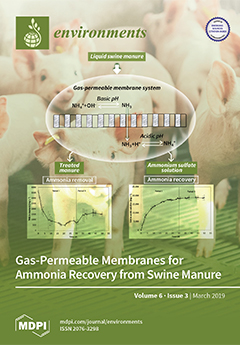Open AccessArticle
Occupational Fine/Ultrafine Particles and Noise Exposure in Aircraft Personnel Operating in Airport Taxiway
by
Gabriele Marcias, Maria Francesca Casula, Michele Uras, Andrea Falqui, Edoardo Miozzi, Elisa Sogne, Sergio Pili, Ilaria Pilia, Daniele Fabbri, Federico Meloni, Marco Pau, Andrea Maurizio Sanna, Jacopo Fostinelli, Giorgio Massacci, Ernesto D’Aloja, Francesca Larese Filon, Marcello Campagna and Luigi Isaia Lecca
Cited by 12 | Viewed by 5335
Abstract
The occupational exposure to airborne fine and ultrafine particles (UFPs) and noise in aircraft personnel employed in airport taxiway was investigated. Stationary samplings and multiple personal sampling sites and job tasks were considered. Size distribution, particle number concentrations, lung dose surface area were
[...] Read more.
The occupational exposure to airborne fine and ultrafine particles (UFPs) and noise in aircraft personnel employed in airport taxiway was investigated. Stationary samplings and multiple personal sampling sites and job tasks were considered. Size distribution, particle number concentrations, lung dose surface area were measured by personal particle counters and by means of an electric low pressure impactor (ELPI+
TM). Morphological and chemical characterization of UFPs were performed by transmission and scanning electron microscopy, the latter together with energy dispersive X-Ray spectroscopy based spatially resolved compositional mapping. A-weighted noise exposure level A-weighted noise exposure level normalized to an 8 h working day and Peak Sound C-weighted Pressure Level was calculated for single worker and for homogeneous exposure groups. Our study provides evidence on the impact of aviation-related emissions on occupational exposure to ultrafine particles and noise exposure of workers operating in an airport taxiway. Main exposure peaks are related to pre-flight operations of engine aircrafts. Although exposure to ultrafine particles and noise appears to not be critical if compared with other occupational scenarios, the coincidence in time of high peaks of exposure to ultrafine particles and noise suggest that further investigations are warranted in order to assess possible subclinical and clinical adverse health effects in exposed workers, especially for cardiovascular apparatus.
Full article
►▼
Show Figures





